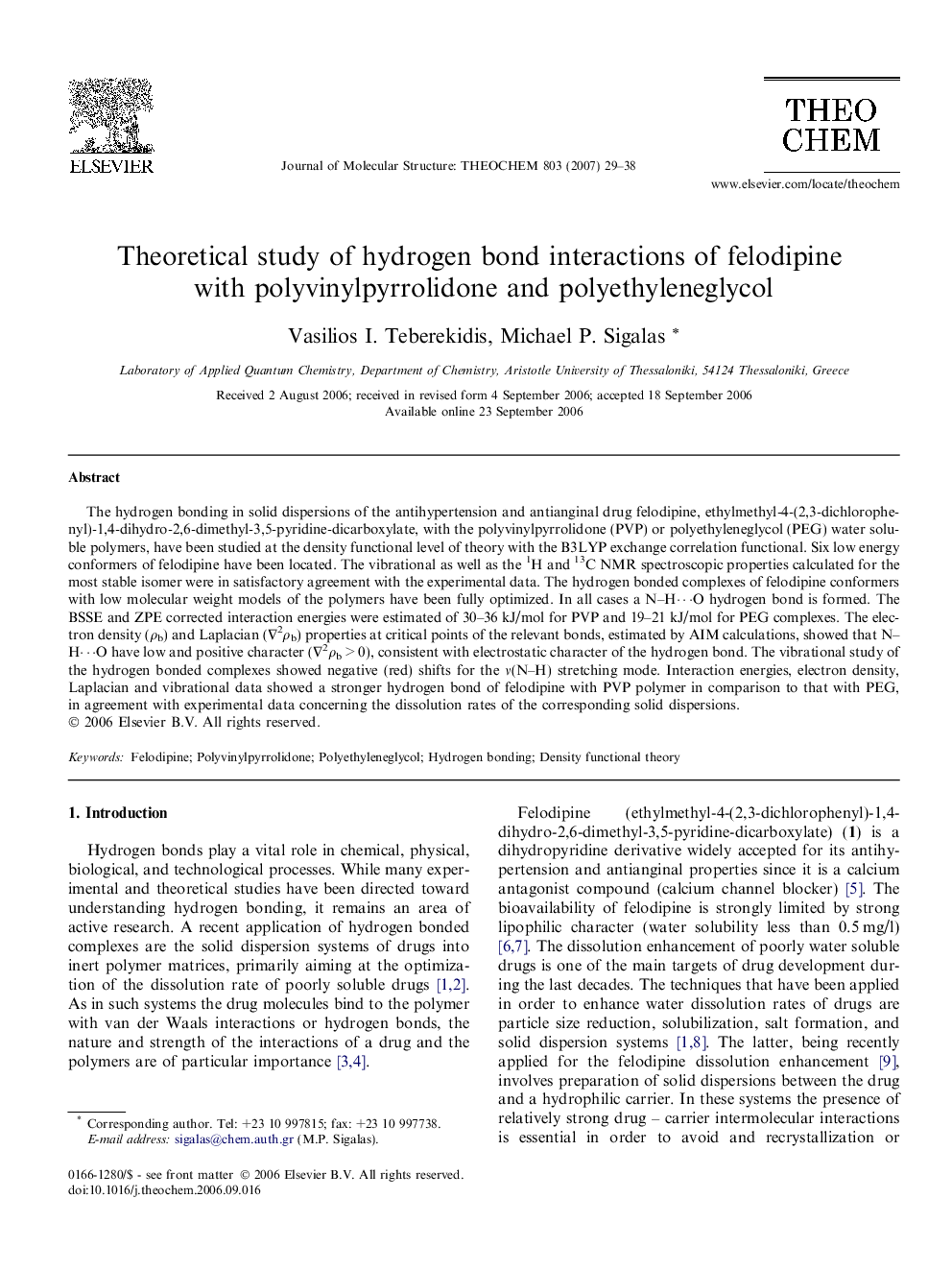| Article ID | Journal | Published Year | Pages | File Type |
|---|---|---|---|---|
| 5418084 | Journal of Molecular Structure: THEOCHEM | 2007 | 10 Pages |
Abstract
The hydrogen bonding in solid dispersions of the antihypertension and antianginal drug felodipine, ethylmethyl-4-(2,3-dichlorophenyl)-1,4-dihydro-2,6-dimethyl-3,5-pyridine-dicarboxylate, with the polyvinylpyrrolidone (PVP) or polyethyleneglycol (PEG) water soluble polymers, have been studied at the density functional level of theory with the B3LYP exchange correlation functional. Six low energy conformers of felodipine have been located. The vibrational as well as the 1H and 13C NMR spectroscopic properties calculated for the most stable isomer were in satisfactory agreement with the experimental data. The hydrogen bonded complexes of felodipine conformers with low molecular weight models of the polymers have been fully optimized. In all cases a N-Hâ¯O hydrogen bond is formed. The BSSE and ZPE corrected interaction energies were estimated of 30-36 kJ/mol for PVP and 19-21 kJ/mol for PEG complexes. The electron density (Ïb) and Laplacian (â2Ïb) properties at critical points of the relevant bonds, estimated by AIM calculations, showed that N-Hâ¯O have low and positive character (â2Ïb > 0), consistent with electrostatic character of the hydrogen bond. The vibrational study of the hydrogen bonded complexes showed negative (red) shifts for the ν(N-H) stretching mode. Interaction energies, electron density, Laplacian and vibrational data showed a stronger hydrogen bond of felodipine with PVP polymer in comparison to that with PEG, in agreement with experimental data concerning the dissolution rates of the corresponding solid dispersions.
Related Topics
Physical Sciences and Engineering
Chemistry
Physical and Theoretical Chemistry
Authors
Vasilios I. Teberekidis, Michael P. Sigalas,
